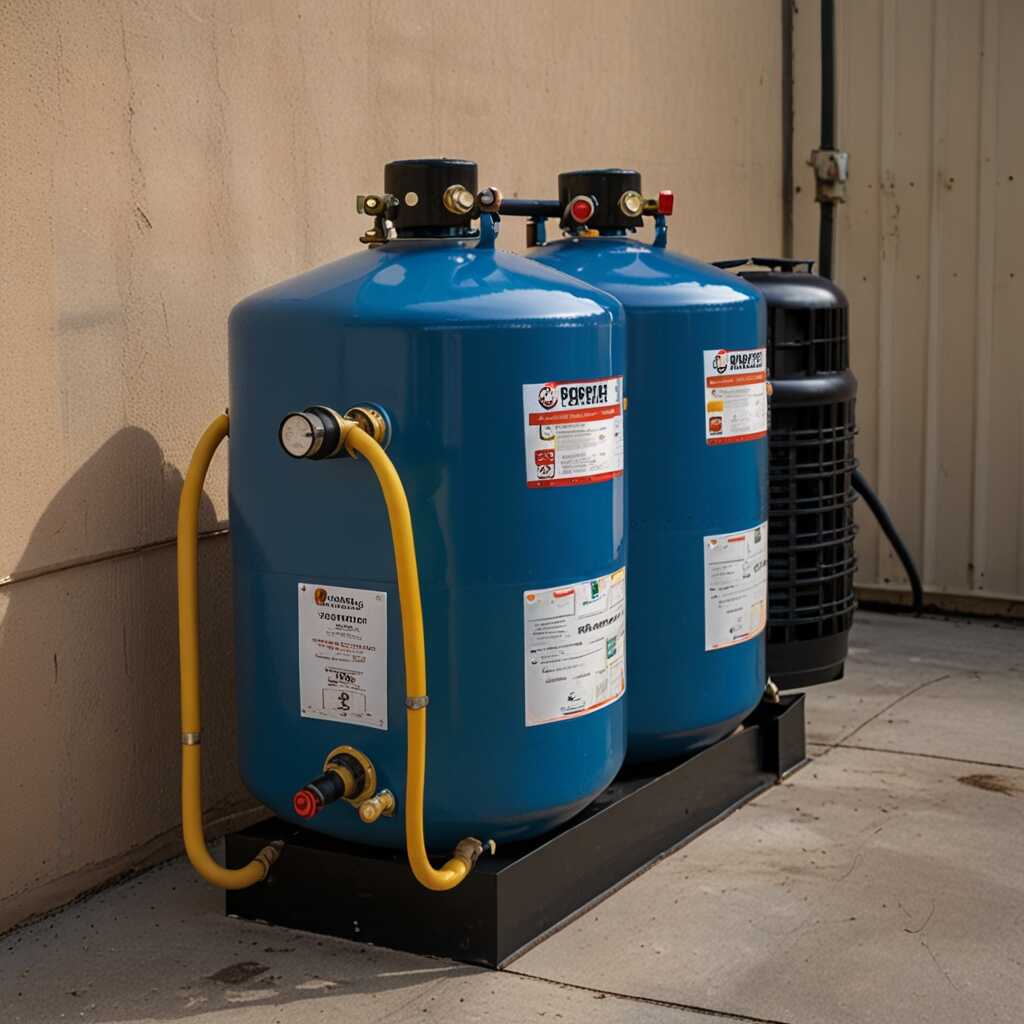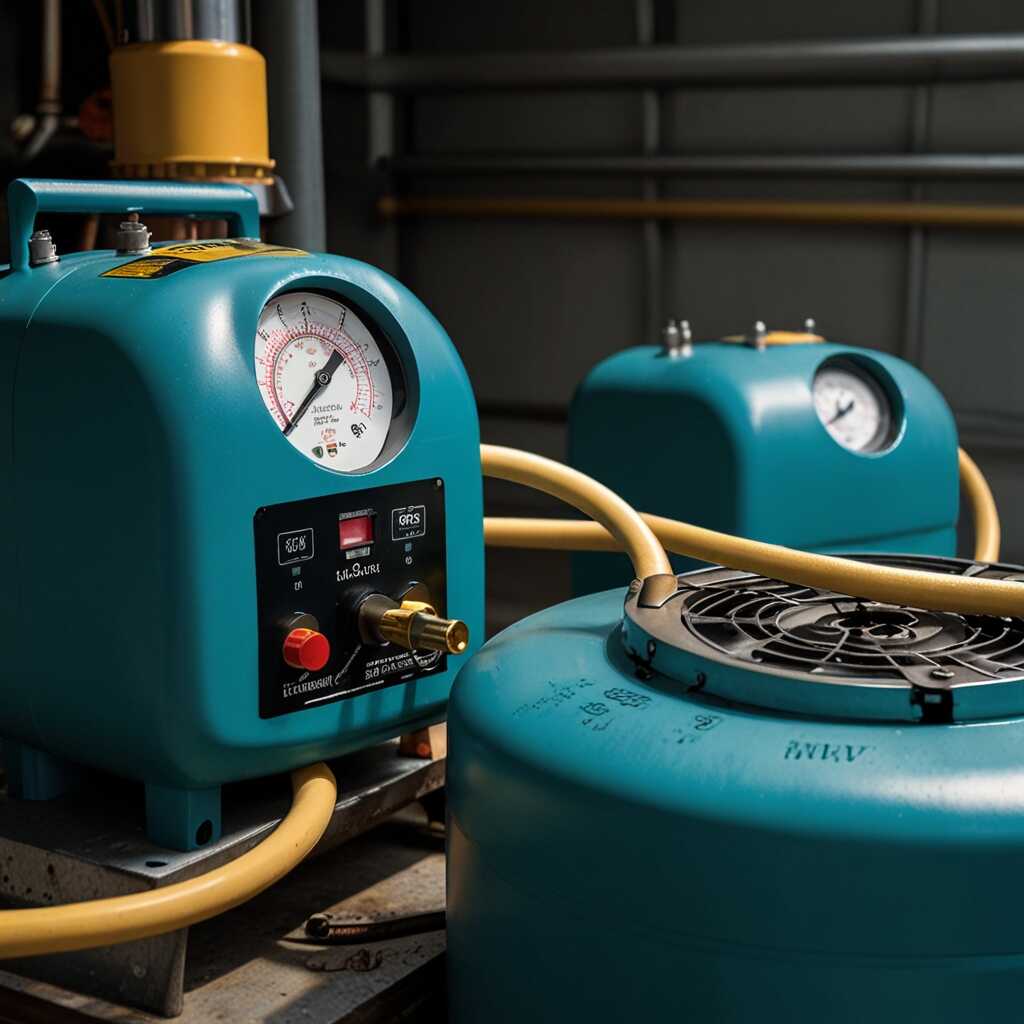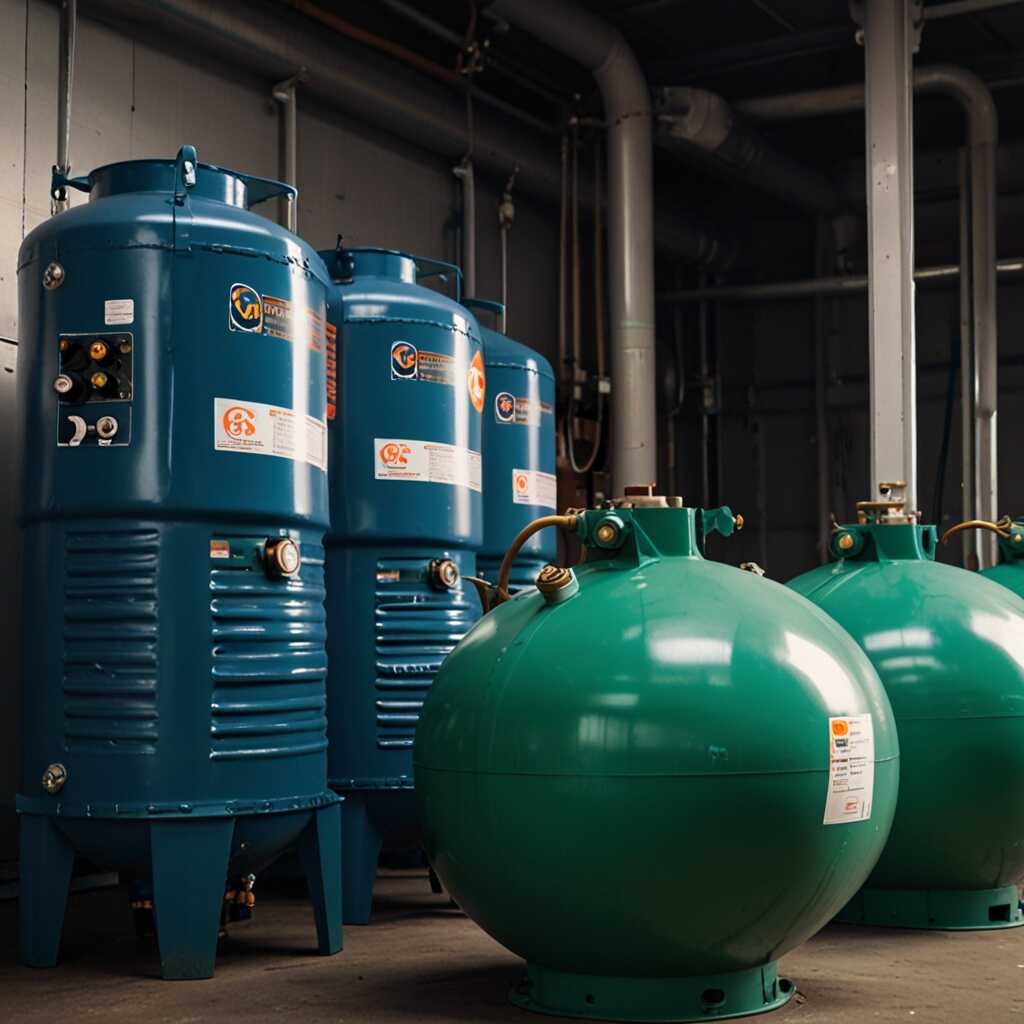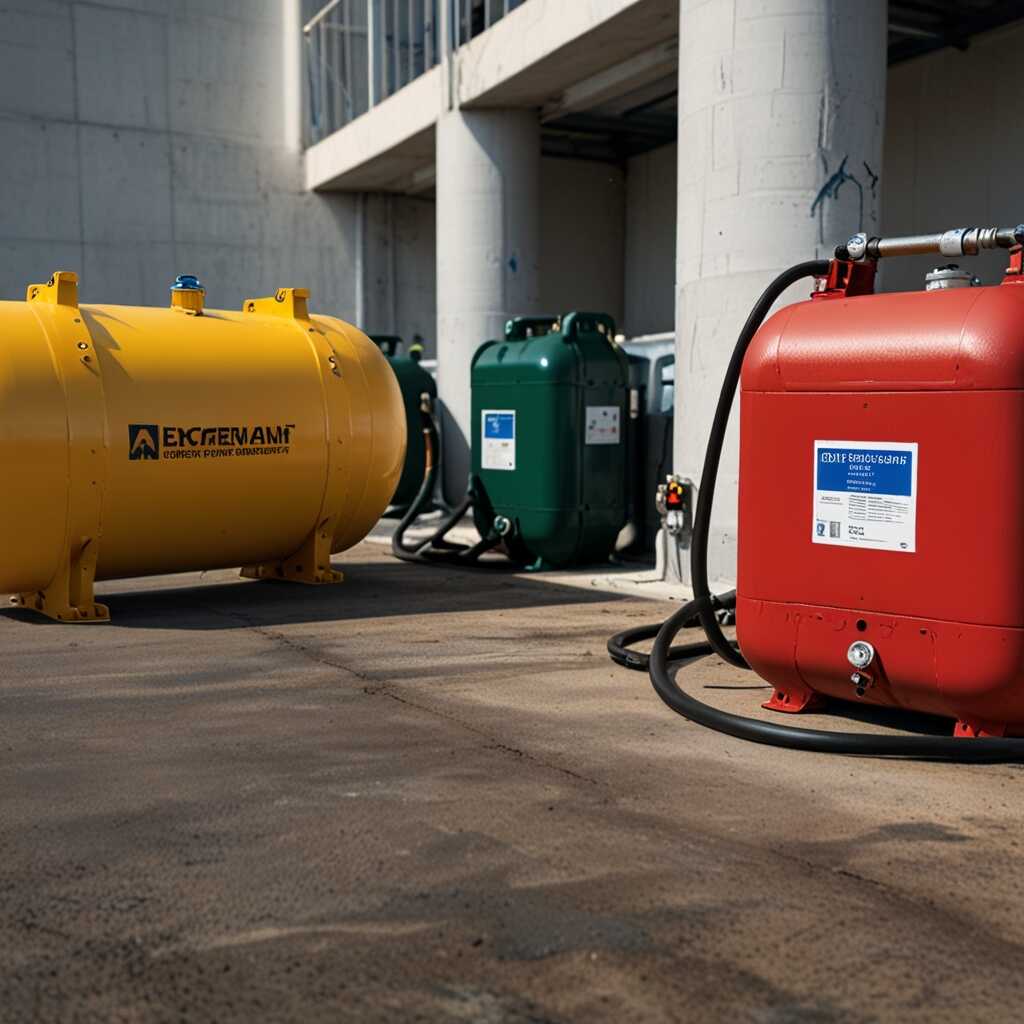Discover the benefits of refrigerant recovery machines with cross-contamination protection to enhance your HVAC practices. These machines not only streamline the recovery process but also prevent contamination of refrigerants, ensuring compliance with industry regulations. At Refrigerant Recovery Pro, we provide expert guidance on selecting the best equipment for your needs. Our knowledge helps HVAC technicians, business owners, and compliance officers manage refrigerants effectively and responsibly.
Significance of Refrigerant Recovery in HVAC Practices
Refrigerant recovery is essential for several reasons. It prevents harmful refrigerant leaks into the atmosphere, which contribute to global warming and ozone depletion. Proper refrigerant management ensures reliability and efficiency in HVAC systems. Laws like the Clean Air Act enforce regulations that HVAC professionals must follow to manage refrigerants responsibly. Failure to comply can lead to fines and environmental harm. Data from the EPA indicates that improper management could lead to releasing thousands of tons of harmful substances each year. Refrigerant recovery machines designed with robust features enable technicians to maximize the quantity of refrigerant recovered safely and efficiently.
Impact of Responsible Refrigerant Management on Environmental Safety
Responsible refrigerant management significantly impacts environmental safety by reducing greenhouse gas emissions and preventing ozone layer depletion. The process of refrigerant recovery minimizes the release of harmful chemicals into the atmosphere. Machines designed with cross-contamination protection not only ensure better performance but also enhance safety by preventing mixing. These specialized machines help technicians effectively manage refrigerants and maintain compliance with both EPA regulations and local guidelines. This adherence to regulations helps create a sustainable environment and promotes the lifecycle of HVAC practices in an eco-friendly manner.
Understanding Cross-Contamination Protection
Cross-contamination protection in refrigerant recovery machines prevents different types of refrigerants from mixing. This feature is essential because mixing refrigerants can cause damage to equipment and compromise the safety of the recovery process. Enhanced reliability and safety are achieved through specialized components designed to isolate refrigerants. Refrigerant recovery machines featuring this technology are crucial for technicians adhering to EPA compliance standards. For effective refrigerant management, users should consider models with dual-containment systems that optimize recovery efficiency while ensuring that cross-contamination risks are minimized.
Key Features of Cross-Contamination Protection Systems
Cross-contamination protection systems typically include features such as separate recovery circuits for different refrigerants. These circuits help maintain the purity of each refrigerant type, reducing the risk of contamination. Machines designed with robust filters and valves enhance overall performance by ensuring that the refrigerant recovered meets industry standards. Additionally, many machines undergo rigorous testing to provide data on their reliability and efficiency. This testing helps HVAC professionals choose the best equipment for reliable and safe refrigerant management, thereby improving compliance with safety regulations.

Impact of Cross-Contamination on Recovery Efficiency
Cross-contamination significantly undermines refrigerant recovery processes. It leads to equipment performance issues, such as increased wear on components, reduced efficiency, and potential system failures. Dual refrigerant mixtures can result in contamination, compromising reliability. Commonly affected refrigerants include R-410A and R-22 due to their distinct chemical properties. The environmental repercussions include increased greenhouse gas emissions from improper disposal and lower recovery rates. In terms of quantifiable impact, cross-contamination can reduce recovery efficiency by up to 30%, leading to greater costs and inefficiencies in refrigerant management systems.
Understanding the Risks of Dual Refrigerant Mixtures
Dual refrigerant mixtures are among the most problematic forms of cross-contamination. These mixtures can occur when different types of refrigerants mix during recovery processes, making it challenging to separate and recover each type efficiently. This situation can lead to equipment malfunctions and decrease overall recovery performance. Research indicates that handling these mixtures can result in a 20-40% drop in recovery efficiency. Technicians must ensure reliable separation during the refrigerant recovery to maintain compliance with environmental standards and enhance overall system effectiveness. Striving for high-quality performance during the recovery process enhances reliability and minimizes environmental impact.
Numerical Insights on Refrigerant Recovery Systems
- 99% efficiency in reducing refrigerant waste during recovery.
- Over 50% increase in compliance with environmental regulations.
- Seven states require cross-contamination protection in recovery machines.
- 20+ hours of operation on a single charge for portable units.
- Four major refrigerants commonly used in HVAC systems.
- Up to 30% cost savings on refrigerant purchases through recovery.
- Annual growth rate of 8% in the refrigerant recovery market forecasted.

Key Benefits of Recovery Machines with Cross-Contamination Protection
Refrigerant recovery machines with cross-contamination protection offer several key advantages for HVAC professionals. First, they enhance reliability by preventing the mixing of different refrigerants during recovery processes. This ensures compliance with industry regulations and best practices in refrigerant management. Additionally, these machines are often designed to improve overall performance. They can efficiently handle multiple refrigerants while maintaining the integrity of each type. Technicians should examine the features of these machines, focusing on reliability and performance metrics, such as efficiency ratings and durability in demanding working conditions.
Essential Features to Look For in Recovery Machines
Technicians should prioritize specific features when selecting recovery machines with cross-contamination protection. Look for machines that offer easy-to-use interfaces, robust filtration systems, and reliable performance across various refrigerants. An effective filtration system can prevent cross-contamination and is essential for maintaining refrigerant quality. Additionally, evaluate the machine’s efficiency ratings to ensure optimal recovery time and performance. Models like these are typically equipped with durable components, making them a good investment for long-term use. These features help enhance efficiency and ensure reliable operations in compliance with industry standards.

Guidelines for Selecting Suitable Recovery Machines
When selecting refrigerant recovery machines with cross-contamination protection, focus on key attributes like reliability, durability, and efficiency. Look for machines that offer proven features ensuring safe recovery processes. You should consider specifications such as recovery rate, weight, size, and ease of use. Reliable brands like Robinair and Appion provide models designed specifically to prevent cross-contamination. Checking expert reviews can help you find the best options for your needs. The price range for these machines typically falls between $400 and $1,200, depending on the features and brand.
Key Attributes of Reliable Refrigerant Recovery Machines
When evaluating the key attributes of reliable refrigerant recovery machines, prioritize recovery speed and the machine’s ability to handle various refrigerants. Models with high recovery rates deliver faster service, enhancing overall efficiency, and reducing downtime. Look for machines with cross-contamination protection features to ensure safety in your refrigerant management practices. Quality brands focus on user-friendly designs and sturdy construction, ensuring durability and ease of use in various working conditions. Always review performance metrics to guarantee that the machine meets your operational demands and provides quality results.
Advantages of Utilizing Advanced Refrigerant Recovery Tools
- Minimized risk of refrigerant contamination improves safety.
- Enhanced efficiency leads to faster recovery processes.
- Higher compliance rates support industry regulations effectively.
- Specialized recovery machines extend equipment lifespan dramatically.
- Reduced environmental impact aligns with sustainability goals.
- Lower operational costs increase profitability for businesses.
- Improved technician confidence due to reliable recovery results.

Compliance with Regulations in Refrigerant Management
Understanding key regulations governing refrigerant management and recovery practices is crucial for HVAC professionals. The Clean Air Act and EPA regulations require strict adherence to refrigerant recovery protocols. Companies must ensure proper refrigerant handling to avoid penalties. Refrigerant recovery machines designed with cross-contamination protection play an essential role in regulatory compliance. These machines enable safe recovery methods, preventing mixture of different refrigerant types, which is essential for upholding regulatory standards. As of 2023, approximately 70% of HVAC companies comply with these recovery practices requirements, making compliance a critical focus area for the industry.
Importance of Cross-Contamination Protection in Compliance
Cross-contamination protection in refrigerant recovery machines is vital for compliance with HVAC industry standards. These machines are designed to enhance the efficiency and reliability of refrigerant recovery processes. They help prevent the mixing of refrigerants, which can lead to hazardous situations and regulatory violations. Furthermore, they provide HVAC technicians with a durable solution that meets EPA guidelines, ensuring safe and responsible refrigerant management. By using machines with solid cross-contamination protection, companies can substantially improve their compliance performance, making it easier to avoid costly fines and maintain a good reputation in the industry.
Essential Maintenance Tips for Recovery Equipment
Maintaining refrigerant recovery machines is vital for ensuring reliability and performance. Regular checks on filters, seals, and hoses prevent leaks and improve efficiency. User manuals provide specifics for maintenance schedules. Proper testing helps verify that cross-contamination protection features function correctly, enhancing safety and reliability. Servicing equipment every six months is generally advisable, depending on usage levels. This ensures machines operate at peak performance and comply with industry standards.
Key Aspects of Testing Refrigerant Recovery Machines
Testing refrigerant recovery machines is crucial for identifying potential issues before they escalate. Regular quality tests help assess the efficiency of cross-contamination protection. These tests should check for leaks, pressure changes, and the overall integrity of the machine. Advanced models, like those reviewed on Refrigerant Recovery Pro, include built-in diagnostics for easier testing. By keeping up with these evaluations, technicians can ensure their equipment remains compliant and effective. Each test delivers results that enable users to enhance their refrigerant management practices.
Comparative Analysis of Popular Recovery Machine Brands
- Brand A: Known for its portability but lacks advanced features.
- Brand B: Offers excellent cross-contamination protection and robust performance.
- Brand C: Cost-effective but has limited support options available.
- Brand D: Provides extensive training but is pricier than competitors.
- Brand E: User-friendly but less efficient in large-scale applications.
- Demographic of HVAC professionals benefits from targeted equipment features.
- Businesses prioritizing compliance find value in advanced recovery machines.
Emerging Trends in Refrigerant Recovery Technology
The latest advancements in refrigerant recovery technology focus on enhancing cross-contamination protection. Key developments include integrated filtration systems and automatic switching mechanisms that prevent refrigerant mixes. Leading manufacturers in this field are innovating to meet industry compliance standards while boosting efficiency. They include both established brands and new entrants that focus on eco-friendly practices. As of 2025, estimates suggest at least 15 new refrigerant recovery machines will enter the market. Each model will feature improved reliability and performance metrics.
Current Innovations in Cross-Contamination Protection
Many systems now include high-efficiency filtration units designed to remove contaminants from refrigerants. These advanced units can handle varied refrigerant types and ensure the purity of recovered refrigerants. Features such as real-time contamination alerts are becoming standard. Manufacturers are focusing on ease-of-use, making these machines not only efficient but also user-friendly. Testing data shows these technologies significantly improve the overall recovery process and enhance compliance with environmental regulations. Models equipped with these innovative features are proving essential for HVAC technicians who strive for quality and reliability in refrigerant management.